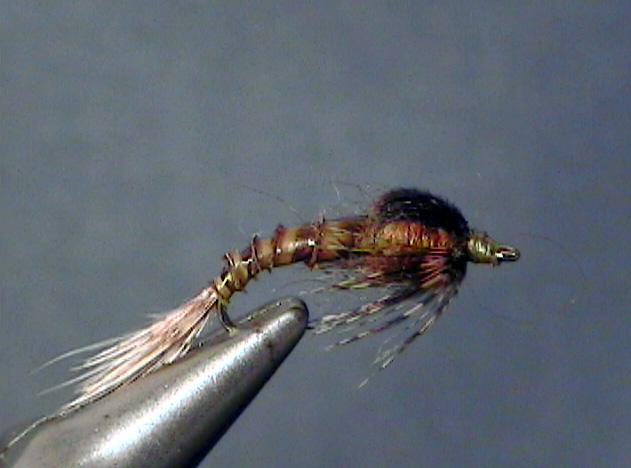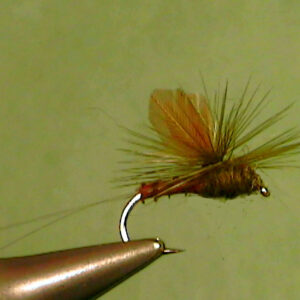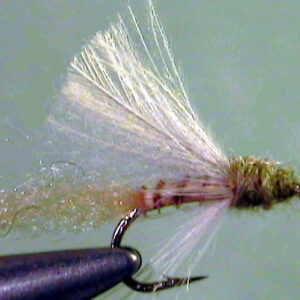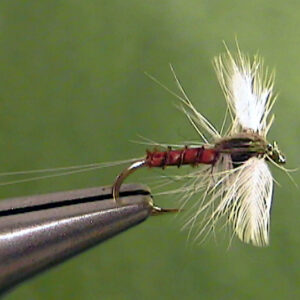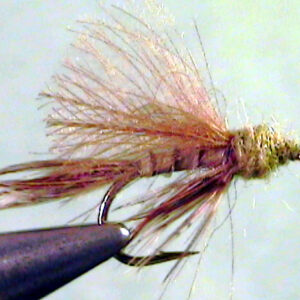Hook Size: 14/16
The Perfect Fly Small Western Green Drake nymph is a trout fly that imitates the Small Western Green Drake mayfly in the nymphal stage of life. Small Western Green Drake nymphs are little swimming nymphs. They can’t actually swim but dart about on the bottom and should be fished on or near the bottom.
The Small Western Green Drakes called “Flavs” by many anglers are crawler nymphs
that prefer moderate to moderately fast currents. They do not live in still or slow moving
water. Like all crawler nymphs, they hide as best they can but they cannot escape as well
as the swimmers or stay out of reach like the burrower nymphs. Neither can they stay
down under the rocks hidden like the clingers. The results is the Small Western Green
Drake nymphs are more apt to be eaten during non-hatch periods than other types of
nymphs.
Like many crawler nymphs, they move out of the faster water of the moderately flowing
runs and riffles to nearby slower water to hatch. This may be calm pockets in heavy
pocket water or the slow side of current seams in smoother water. It’s usually a matter of
a very few feet rather than longer distances of measured in yards.
It is during the time of this short migration that trout feed on them with ease. It’s also the
easiest and best time to catch them on an imitation of the nymph. They are readily
exposed on the bottom and almost completely defenseless from then until they emerge
into duns and fly away.
These mayfly nymph emerge in the surface skim and they are very subject to being
eaten as they attempt to get to the surface to hatch. This will be explained in the
emerger section.
Presentation:
Trout can be taken on flies that imitate the Small Western Green Drake nymphs anytime
of the season, however, again, your odds are much higher if you fish a few days prior to
the hatch and in the mornings during the hatch prior to their emergence. It’s by far the
best time imitate their nymphs.
If the stream has a fairly level bottom, you can use the standard up and across
presentation using a strike indicator. You just want to make sure you keep the nymph
near the bottom on the slow sides of the current seams or in the calmer pockets behind
boulders of pocket water. The slower water along the banks near fast water in pocket
water streams is another location they emerge.
If the stream’s bottom isn’t fairly level, we prefer to fish the nymph without an indicator.
This requires more attention and it’s a little more difficult to detect strikes but otherwise,
it’s the best method to use. The high sticking method of nymphing is best in most pocket
water streams.
You will need to add the necessary amount of weight a few inches above the nymph on
the tippet to keep the fly down on or very near the bottom. Let the fly move along in a
dead drift fashion. If the fly gets in slower water, pick it up lightly and move it downstream
a few inches at a time until the current takes over. The main thing is to watch your fly line
for stops, pauses, twitches or any unnatural movement you detect. If high sticking, you
can usually feel the trout take the nymph.
Copyright 2003 James Marsh
